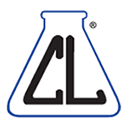
Answer:
Acrylamide is a neurotoxin and probable carcinogen (cancer-causing agent) formed when certain starchy foods, such as wheat and potatoes, are cooked at high temperatures (>248 degrees Fahrenheit), as in the case with foods such as French fries and cooked potatoes (although the amount depends on the potato variety), cookies, crackers, breads, and other baked goods.
It can also be produced when coffee and cocoa beans and buckwheat (kasha) are roasted and can occur in instant coffee and coffee substitutes. It is also found in surprisingly high amounts in prune juice and some types of olives, although the amount in olives varies depending on the style (California, Greek or Spanish styles) and whether the olive is pitted or sliced. Small amounts of acrylamide have been found in microwaved popcorn and some dried fruits, including dates and apricots but not raisins or dried cranberries, with higher amounts in smoked fruits.
Although no level of exposure is absolutely safe, amounts of acrylamide typically consumed by most adults are believed to represent very low levels of risk. Nevertheless, there are steps you can take to reduce your exposure, including how you cook (including use of an air fryer or pressure cooker) and bake, whether you leave the crust on bread or cut it off, the type of potato (white, yellow, red or blue, or sweet potatoes) you choose, and if you consume these foods with other foods. Sign in as a member to get the details.
Join today to unlock all member benefits including full access to all CL Answers and over 1,400 reviews.
Join NowAlready a member? Sign In Here.
Join now at www.consumerlab.com/join/









HF
April 29, 2023Do you know the amount of acrylamide in Caffix coffee substitute? Also in Mt Hagen decaf instant coffee?
 ConsumerLab.com
ConsumerLab.com
May 18, 2023We are not aware of the amount of acrylamide in those specific coffee products. However, information about the average amounts of acrylamide found in instant coffee and coffee substitutes, and how those amounts compare to that found in brewed coffee, can be found in the following section of our article: https://www.consumerlab.com/answers/what-is-acrylamide-is-it-true-that-coffee-and-cocoa-contain-this-toxin/acrylamide-coffee-cocoa/#coffee
Reply to this post…
Elissa9483
April 22, 2023What about coffee substitutes like those made from roasted grain? On my jar of Caffix it has a prop warning but does not list the amount of acrylamide in a serving size . I have not received my jar of Persal or Postum yet, so I don't know about those.
 ConsumerLab.com
ConsumerLab.com
April 28, 2023We've added information about the amount of acrylamide in coffee substitutes (including Postum) in the following section of our article: https://www.consumerlab.com/answers/what-is-acrylamide-is-it-true-that-coffee-and-cocoa-contain-this-toxin/acrylamide-coffee-cocoa/#coffee
Reply to this post…
HF
April 04, 2023I just bought a coffee substitute (Cafix) as I am trying to cut down on coffee. I even like it. However, it has the California warning label for Acrylamide. I tried to find out how much acrylamide a tsp contains but failed. I did find an article (https://pubmed.ncbi.nlm.nih.gov/24325083/) that looked at coffee and coffee substitutes. It said the highest concentrations of acrylamide were found in coffee substitutes. It might be worth looking into this more and mentioning it.
 ConsumerLab.com
ConsumerLab.com
April 28, 2023Thanks for this suggestion! We've added information about the amount of acrylamide in coffee substitutes (including the brand Postum) in the following section of our article: https://www.consumerlab.com/answers/what-is-acrylamide-is-it-true-that-coffee-and-cocoa-contain-this-toxin/acrylamide-coffee-cocoa/#coffee
Reply to this post…
Scott9475
May 09, 2022please pay more attention to your denominators - few will follow your assumingly unintentional slight of hand to 40 mcg/KG of popcorn... that's a lot of popcorn....... vs a serving.. which is ? i am guessing a lot less...
 ConsumerLab.com
ConsumerLab.com
May 09, 2022For details about the amount of acrylamide in a serving of popcorn (about 4-5 cups) see our table, "Estimated amounts of acrylamide in common foods": https://www.consumerlab.com/answers/what-is-acrylamide-is-it-true-that-coffee-and-cocoa-contain-this-toxin/acrylamide-coffee-cocoa/#popcorn-table
Reply to this post…
Martha9472
May 03, 2022Thank you so much for addressing the issue of acrylamide in popcorn. I am microwaving (1000 watts) in a glass container (without oil) for just under 2 minutes--stopping just before the popping slows down, hoping for acceptable levels. Slightly undercooking does waste more kernels and makes the popcorn less crunchy (a tiny bit chewy) but at least it's a salty snack that isn't too harmful.
Reply to this post…
Charles Kuttner MD
May 01, 2022I’m wondering about air-popped popcorn. (I’m assuming that “conventional’ means popped in hot oil.)
 ConsumerLab.com
ConsumerLab.com
May 09, 2022See the following section in our article above: https://www.consumerlab.com/answers/what-is-acrylamide-is-it-true-that-coffee-and-cocoa-contain-this-toxin/acrylamide-coffee-cocoa/#hot-air-popper
Reply to this post…
Thadd9467
April 26, 2022How much acrylamide when using a hot air popcorn maker with plain popcorn? Does conventional cooking include the hot air popcorn maker?
 ConsumerLab.com
ConsumerLab.com
May 09, 2022Information about the amount of acrylamide in hot-air popcorn can be found in the following section of our article above: https://www.consumerlab.com/answers/what-is-acrylamide-is-it-true-that-coffee-and-cocoa-contain-this-toxin/acrylamide-coffee-cocoa/#hot-air-popper
Reply to this post…
Cari9458
April 11, 2022What about prunes themselves? Any harm in eating the fruit?
 ConsumerLab.com
ConsumerLab.com
April 11, 2022Please see the information about prunes in the answer above https://www.consumerlab.com/answers/what-is-acrylamide-is-it-true-that-coffee-and-cocoa-contain-this-toxin/acrylamide-coffee-cocoa/#prunes.
Reply to this post…
marianne9447
April 05, 2022What about microwaving potatoes?
 ConsumerLab.com
ConsumerLab.com
April 07, 2022Please see the "Potato" section in the answer above for information on the effects of microwaving potatoes on acrylamide formation.
Reply to this post…
Katie9439
March 27, 2022What about sweet potatoes? Are they the same as red or purple skinned?
 ConsumerLab.com
ConsumerLab.com
March 29, 2022Great question! Please see the following section in our article above: https://www.consumerlab.com/answers/what-is-acrylamide-is-it-true-that-coffee-and-cocoa-contain-this-toxin/acrylamide-coffee-cocoa/#type-of-potato
Reply to this post…
john9432
March 25, 2022It says yellow fleshed is best. The primary potato people eat is the white. What about white potatoes?
 ConsumerLab.com
ConsumerLab.com
March 29, 2022Please see the following section in our article above: https://www.consumerlab.com/answers/what-is-acrylamide-is-it-true-that-coffee-and-cocoa-contain-this-toxin/acrylamide-coffee-cocoa/#type-of-potato
Reply to this post…
Carolyn9430
March 25, 2022Regarding your references to "yellow-fleshed" potatoes as compared to red and purple varieties, I assume you're talking about "yellow-skinned" compared to red-skinned and purple-skinned. The "flesh" of all potatoes is white, isn't it? And where do brown-skinned potatoes, like Idahos, factor in?
 ConsumerLab.com
ConsumerLab.com
March 29, 2022Great questions! In the Orsák study, the potatoes were indeed yellow-fleshed (e.g., Figaro variety), red-fleshed (e.g., Mulberry Beauty variety) or purple-fleshed (e.g., Violet Queen variety). For information about acrylamide content found in varieties such as Idaho potatoes, see the following section of our article above: https://www.consumerlab.com/answers/what-is-acrylamide-is-it-true-that-coffee-and-cocoa-contain-this-toxin/acrylamide-coffee-cocoa/#russet
Reply to this post…
Gerald9426
March 25, 2022What about organic coffee?
 ConsumerLab.com
ConsumerLab.com
March 29, 2022As noted below, there do not appear to be studies on acrylamide in regular versus organic coffee, but since acrylamide is formed (during cooking) from sugars and amino acids that naturally occur in coffee beans, organic coffee would likely contain similar amounts of acrylamide.
Reply to this post…
Tekla9421
March 25, 2022What about pressure cooking potatoes like in an instapot? How much acrylamide does this produce?
 ConsumerLab.com
ConsumerLab.com
March 29, 2022Great question! Please see the following section in our article above: https://www.consumerlab.com/answers/what-is-acrylamide-is-it-true-that-coffee-and-cocoa-contain-this-toxin/acrylamide-coffee-cocoa/#pressure-cooker
Reply to this post…
Cristine9398
April 11, 2018Does it make any difference if the coffee is organically grown?
 ConsumerLab.com
ConsumerLab.com
April 19, 2018Hi Cristine - There do not appear to be studies on acrylamide in regular versus organic coffee; however, as acrylamide is formed during roasting as a product of sugars and amino acids that naturally occur in coffee beans, it's likely organic coffee would contain similar amounts.
Kate
March 25, 2022I've wondered the same thing since trying to adopt more organics. But I also wonder how long canned coffee sits in commercial storage, then store shelves and how to take that into account if I'm trying to store what I've bought for a year.
Reply to this post…
Rob T
April 04, 2018The scientific findings linking low or even medium doses of acrylamide to cancer are few and largely limited to non-human studies, only some of which suggest direct causality. In contrast, we see a growing body of diverse types and sources of evidence that coffee consumption – acrylamide and all – reduces the risk of certain cancers, type 2 diabetes, coronary artery disease, and other illnesses, largely in a dose-dependent fashion. I am not suggesting that coffee is an unqualified good or that its net positive and negative impact does not vary across individuals with different genetic and environmental backgrounds. On the other hand, California’s position on coffee needs to be analyzed in terms of the sociology of the use of scientific findings, where you will see many cases of bad judgment, this one included.
Ellen9392
April 08, 2022Thank you, Robert! This is a very comprehensive and sensible comment.
Reply to this post…
James
April 04, 2018Regarding prop 65 I have found that "more stringent" than federal standards is an understatement. For example prop 65's limit for lead is 1000 times lower than federal. One thousand!
That's why there's a long drawn out court battle by an activist group over all the specific chocolate bars that even Consumer Labs had listed as passing the contamination test. So in addition to all coffee, every dark chocolate product no matter how practically safe, would have a prop 65 warning on it.
It is getting ridiculous because I see it on non-consumables as well, like shelving and any commercial place for whatever reason (I don't mean factories spewing fumes either, just shopping places, apartments, etc)
LYNN9390
February 12, 2022While I'm an advocate for government regulation of harmful chemicals, you provide valuable information in your comment and a reasonable perspective. Thank you for writing. What we don't know is the combine effect of all the carcinogens to which we are exposed, both natural and man made. Looks like I'll be avoiding French Fries and potato chips, neither of which I've ever eaten much.
Reply to this post…
Al9366
October 18, 2017Although I never touch them, my wife eats a lot of potato chips. I've never seen a warning on any potato chip bag although we live in California. There's hysterical warnings about everything else, including the propane we need for cooking, so how have potato chip manufacturers managed to escape the warning mandate? I also never touch fast food, but wonder if anyone has ever been asked, "Would you like a warning with your fries?"
Reply to this post…
 ConsumerLab.com
ConsumerLab.com
October 04, 2017If it is "cocoa," that means it has been roasted, so it likely will contain some amount of acrylamide. Also, raw does not mean it has not been treated in some way. See the full answer for details.
Reply to this post…
judith9350
October 04, 2017Raw cocoa would not contain acrylamide as it has not been heated correct?
Reply to this post…
Mary9343
October 04, 2017Another source of acrylamde is prunes and prune juice. It's a little scary how much they contain, particularly if you're as fond of them as I am!
https://www.ncbi.nlm.nih.gov/pmc/articles/PMC3118507/
Anne9344
October 18, 2017According to the information above, a sine organic prune would contain less than 2mcg. As 7 prunes contain 10mcg. That is not a lot per prune. And who could eat 7 per day?
Mark9345
April 14, 2018If prunes have significant amounts of acrylimide, does anyone know how raisins, currants, figs, and dates compare? They are all sugary foods that are dried as well. I would imagine the drying processes that are used vary considerably in temperature and time.
Reply to this post…
Alan9340
October 04, 2017How much of this is present in Raw Cacao nibs?
 ConsumerLab.com
ConsumerLab.com
October 04, 2017As explained in the answer above, the concentration of acrylamide in cacao nibs is likely to be lower than in dark chocolates and most cocoas.
Reply to this post…
Natalie9338
October 02, 2017I buy cocoa 'nibs' (cacao) Most of the brands out there claim to be 'raw', which means they haven't been processed at high temperatures. I would assume that these would be fairly low in acrylamide?
 ConsumerLab.com
ConsumerLab.com
October 16, 2017Hi Natalie - We've added information about cocoa nibs in the Answer above.
Reply to this post…
Heather9331
October 02, 2017Why/how is acrylamide present in roasted nuts?
 ConsumerLab.com
ConsumerLab.com
October 16, 2017Hi Heather - High heat during roasting can produce acrylamide in nuts just as it does in coffee beans, cocoa beans, and other foods.
Reply to this post…
judith9329
October 01, 2017I think it would be worth mentioning that you can get chocolate made from raw cocoa and that would not contain acrylamide. Can consumer lab comment on this?
 ConsumerLab.com
ConsumerLab.com
October 16, 2017Hi Judith - We've added information about this in Answer above.
Reply to this post…